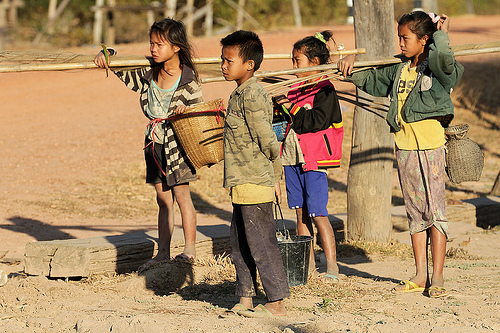Laos Views Development Gap As Major Challenge
Wealth distribution remains a major challenge despite the government’s efforts to tackle the development gap since 2011.
According to a report from the Ministry of Planning and Investment, while the economy has grown by at least eight percent annually over the past two and a half years, average per capita income throughout the country is still low.
In the central region the figure stood at US$1,680 in the 2011-12 fiscal year, while in the north and south of the country it was US$985 and US$1,060 respectively, the planning ministry reported in its mid term report.
The government vowed to address the growing development gap in 2011. International financial institutions such as the World Bank, Asian Development Bank and other development partners also vowed to support the Lao government in achieving its ambition.
However, at the mid-way point in the country’s five year socio-economic development plan, the disparity in development has yet to be resolved.
Officials say they are not surprised to learn that per capita income in the north is the lowest in the country. People in this area encounter difficulties in developing urban areas due to the mountainous nature of the terrain.
Road building, electricity installation and the provision of other infrastructure is more difficult compared to flatland areas, officials said, but point out that it is this very lack of infrastructure that hinders the growth of business, such as commercial farming.
The lack of transport infrastructure also makes it difficult for people in the north to access government services such as healthcare and education, which are essential for the sustainable development of the region.
Planning ministry officials say one of the key issues in tackling the development gap is to provide better road links. A better transport network will enable people in different parts of the country to do business and generate income.
Officials also said the government should accelerate the development of micro and small enterprises by improving the business and investment climate. They say business growth would not only shrink the regional development gap but also the income gap between rich and poor.
The Lao economy is based on m ining and hydropower, so the government should spend some of the revenue earned from the natural resource sector on the development of small and medium enterprises, to ensure that economic development is sustainable.
Accelerating the development of agriculture, especially in rural areas, is also key to reducing the income gap. Most Lao people are subsistence farmers, so the development of agriculture would boost incomes for many families.
The government should also focus on the management of the economic, environmental and social impacts of development projects to ensure that development is sustainable, officials said.
published with the permission of Vientiane Times

